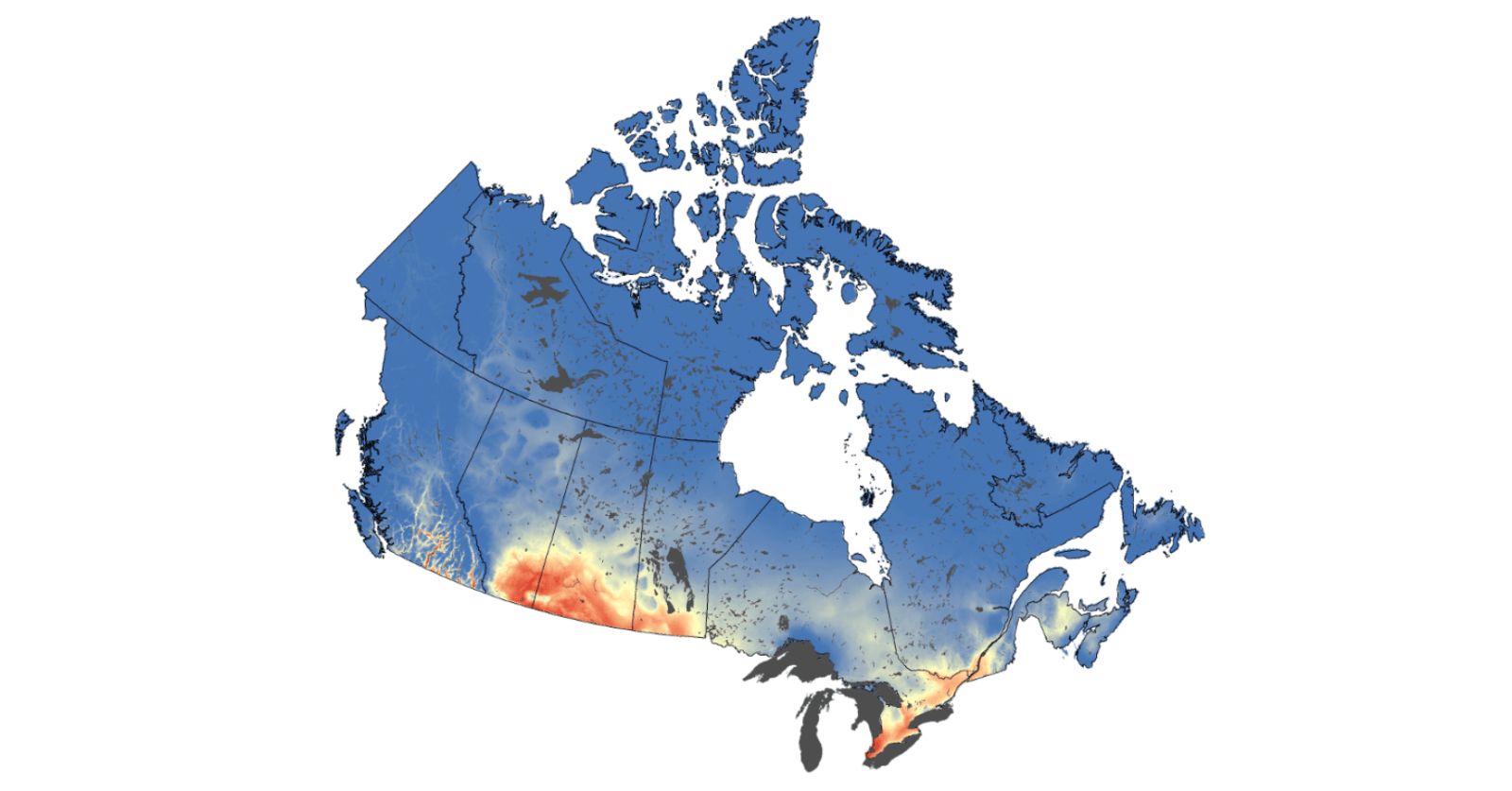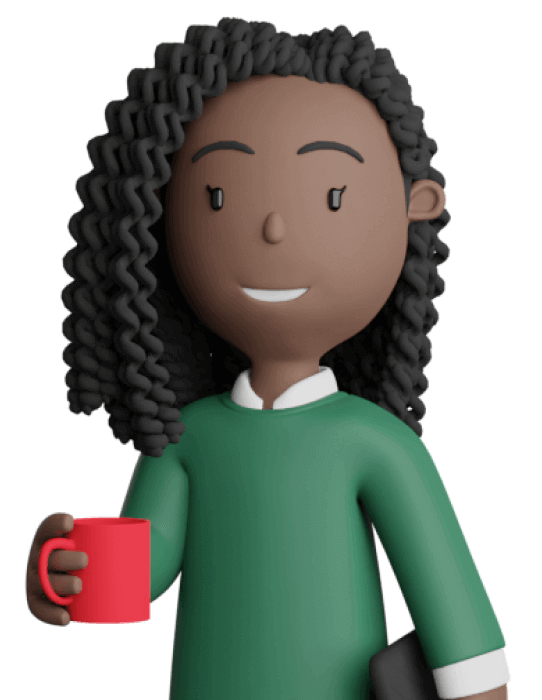How do you feel about climate change?
Learn about eco-hope to combat feelings of climate anxiety.

Overview
Students explore climate change and the feelings that arise when hearing about climate issues. They start the activity by viewing a picture of climate impact. Students then view images of BC Hydro’s hydroelectric sites, highlighting the province’s stunning natural landscapes and recreational opportunities, while showcasing how clean, renewable electricity powers British Columbia. They watch a video showing a future with many renewable energies in B.C. and play a game to discover how BC Hydro is helping to mitigate climate change.
Instructions
What you'll need
- Laptop, projector and screen
- “How do you feel about climate change” slideshow
- “True or False” handout
- Video: Powering B.C.'s potential (BC Hydro)
- Dice, plan for one die per pair of students
- Paper and pencils for each student
1. Start the class by posing the question “What is climate change?” and asking students to define what it is and how it makes them feel when they hear climate issues in the news.
2. Students may share that climate change refers to the Earth's increasing temperatures, leading to extreme and unpredictable weather conditions. The use of fossil fuels by humans has contributed to increasing global temperatures, which have had significant impacts on both human populations and wildlife.
3. Ask students if they have experienced climate worry or concern, explaining this is a normal and valid response, but we do not want it to interfere with our daily life and functioning.
Fossil fuels or renewable energy?
4. Now pull up the “How do you feel about climate change” slideshow. At slide 2, ask students to look at this picture and silently consider how the image makes them feel. Explain this is a picture of a coal power plant generating electricity and is a contributor to climate change and poor air quality. Some students may share this makes them feel sad or uncomfortable.
5. At slides 3 to 7, invite students to look at the pictures and silently consider how these images make them feel. Some students may share they feel happier or calmer looking at an image of nature. As you move through the pictures, invite students to share if they have visited any of the sites.
a. Slide 3 is a picture of Buntzen Lake, which is a BC Hydro dam and reservoir making electricity from falling water. It is also a recreational area, enjoyed by many, with swimming, hiking, picnicking, and boating. Buntzen is the traditional territory of Kwikwetlem First Nation, Musqueam Nation, Tsleil-Waututh Nation, Squamish Nation, and Stó:lō First Nations.
b. Slide 4 is Pend d'Oreille Reservoir in the Kootenays. This also doubles as a source of clean, renewable hydroelectric power and a recreation area for the public, including camping, picnicking, swimming, boating, canoeing, wildlife viewing, and fishing. People of the Kalispel First Nation were the first to live in the Pend d'Oreille Valley, thriving on the abundant flora and fauna in the area.
c. Slide 5 is Jones Lake Reservoir located east of Chilliwack. The reservoir surface is over 600 m above the Fraser River, which makes it ideal for generating clean electricity to power our lights and homes. (600 m is like a 200-storey building.) This location is also an attractive public spot for camping, swimming, boating, and fishing. Jones Lake is located on the traditional territory of the Sto:lo First Nation.
d. Slide 6 is Clayton Falls Recreation Site in Bella Coola, Northern B.C. This is the only ocean-front park in the Bella Coola area. Oceanside Park sits near the run-of-river hydroelectric facility. Clayton Falls hydroelectric run-of-river facility was built in 1962 to reduce demand for diesel fuel. Clayton Falls is a great place to explore the beach, walk, and picnic. It is located on the traditional territory of the Nuxalk Nation.
e. Slide 7 is John Hart Generating Station on the Campbell River, Vancouver Island. This river system generates clean electricity and contributes to the surrounding communities by providing services like flood control, domestic water supply, and recreation. Fun can be found along the river with camping, picnicking, swimming, hiking, fishing, kayaking, tubing, sight-seeing, and nature appreciation. John Hart is located on the traditional territories of We Wai Kai (Cape Mudge) First Nation, Wei Wai Kum (Campbell River) First Nation, K’omoks First Nation, and Homalco First Nation.
6. At slide 8, share that in B.C. we have clean, renewable electricity generated from falling water and show the video: Powering B.C.'s potential (BC Hydro) about what’s happening in B.C. as we look to the future and continue generating clean energy from many renewable resources.
7. Now ask students to reflect on how they feel looking at these images of nature and viewing the video.
8. Share with students that there is a lot of news coming at us that can cause concern for the future. The opposite of this climate anxiety is called eco-hope. Experiencing nature, learning about good news stories, and taking action to mitigate climate change helps us feel more positive about the future.
True or false
9. Share with students they will be playing a true or false game to share highlights of what BC Hydro is doing to combat climate change and contribute to eco-hope and eco-action. The full instructions and statements for this game are provided in the downloadable “True and False” handout.
10. Put students in pairs facing each other. Print one copy of the “True and False” handout for yourself to read the statements aloud during the activity.
11. Students will follow the game using the statements you read from the handout. All rules and statements are included in the handout.
12. Conclude the game by inviting students to add up their scores.
Modify or extend this activity
- Continue this unit with the next activity: “Nature art for eco-hope”
- Take students on a field trip to one of The BC Hydro Visitor Centers
Curriculum Fit
Physical Health and Education (4–7)
Big ideas
- Personal choices and social and environmental factors influence our health and well-being.
Curricular Competency
- Healthy and active living: Identify and describe factors that influence healthy choices.
- Mental well-being: Describe and assess strategies for promoting mental well-being and describe factors that positively influence mental well-being and self-identity.
Arts Education (4–7)
Big idea
- Exploring works of art exposes us to diverse values, knowledge, and perspectives.
Curricular Competency
- Exploring and creating: Explore identity, place, culture, and belonging through arts experiences.
Assessments
- Assess students’ understanding of climate anxiety and eco-hope.
- Assess students’ critical and reflective thinking as they looked at the pictures and shared their thoughts.
- Assess students’ participation in the class discussions and true or false game.
Teaching Notes
Understanding climate anxiety
Excerpt from The Mental Health and Climate Change Alliance.
“Climate change isn’t just an environmental issue—it’s also an emotional one for many young people. Children and teens today are acutely aware of climate threats, and this awareness often comes with intense feelings. In a recent international survey of 10,000 youth (ages 16–25), nearly 60% said they feel “very” or “extremely” worried about climate change, with almost half saying these worries negatively affect their daily lives. Canadian youth echo these concerns: in one national study, 73% of young Canadians said the future feels “frightening” due to climate change, and nearly half believed “humanity is doomed.” Over three-quarters reported that climate change impacts their overall mental health, and 4 in 10 said their climate-related feelings have a negative effect on their daily life. Clearly, climate change is no distant abstraction for our kids—it’s a real source of stress, anxiety, and even despair in their lives.”
Building eco-hope
Strategies to build eco-hope include connecting with nature and your community, focusing on controllable actions and small wins, channeling emotions into positive action, and educating yourself and others about environmental issues. Engage with inspiring environmental campaigns, join local groups, practice self-compassion, and limit overwhelming climate news to avoid burnout.
BC Hydro takes action on climate change
BC Hydro is taking action on climate change by working within the provincial Clean BC plan to increase the supply of clean electricity, improving energy efficiency, and reducing the carbon impact of its own operations. Key initiatives include adding renewable energy sources through calls for power, investing significantly in energy efficiency programs for customers, and reducing greenhouse gas (GHG) emissions from its own buildings, fleet, and equipment.







